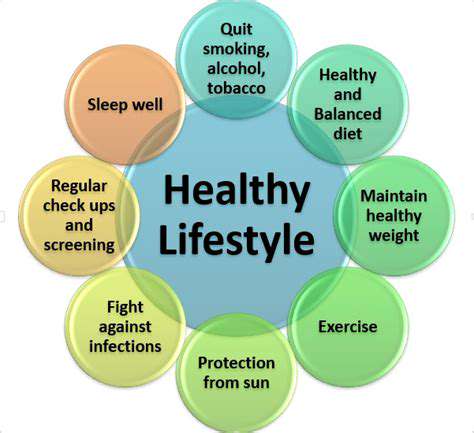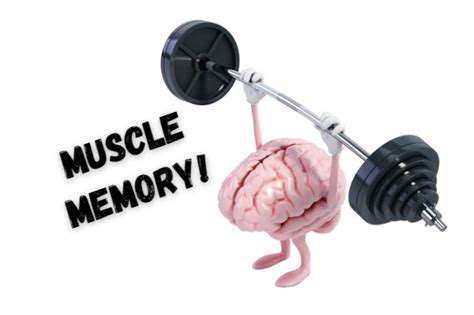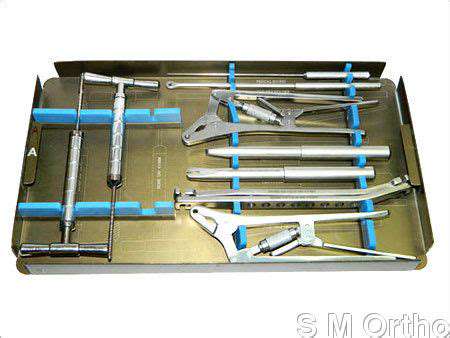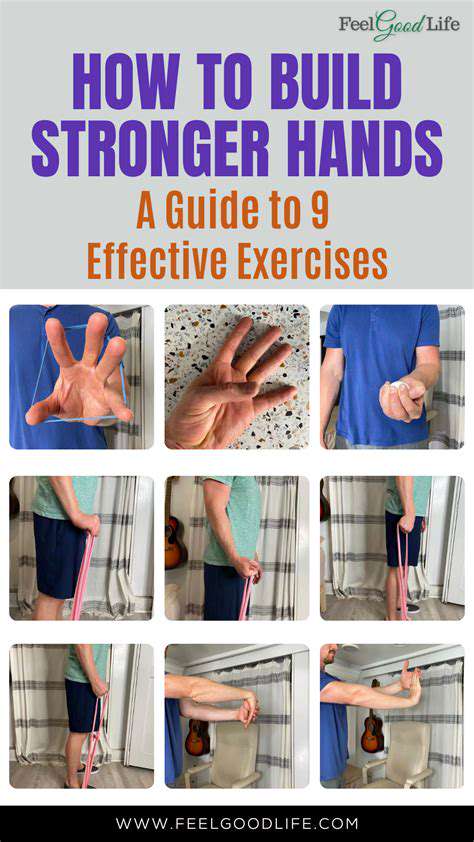Workouts to Strengthen Hand Function
Simple Exercises for Improved Grip Strength

Hand Grip Strengthening Exercises
Improving hand grip strength is crucial for daily tasks, from opening jars to playing musical instruments. Regular hand exercises can significantly enhance your grip strength and overall hand health. These exercises are designed to be simple and effective, and can be incorporated into your daily routine without much effort.
A variety of hand exercises can help build strength and endurance in your hands and forearms. Simple exercises like squeezing a stress ball or using resistance bands can target specific muscle groups, improving your hand grip over time. Consistency is key to seeing results.
Squeezing a Stress Ball or Similar Object
A stress ball is a great tool for strengthening your hand grip. Regular squeezing, for about 10-15 repetitions, can significantly improve your grip strength over time. Be sure to use a stress ball that offers appropriate resistance to avoid injury or frustration. Start with lighter resistance and gradually increase the difficulty as your grip strength improves.
Using different types of stress balls, such as those with varying textures or weights, can engage different muscle groups and provide a more comprehensive workout for your hands and forearms. This variety will stimulate different parts of the hand muscles and ensure a more complete exercise.
Using Resistance Bands
Resistance bands offer a versatile way to build hand grip strength. The adjustable resistance levels allow you to gradually increase the challenge as your grip strength improves. Wrap the band around your hand and squeeze it, holding the position for a few seconds. Repeat several times. Remember to maintain proper form to prevent injury.
Using resistance bands for hand exercises can be done almost anywhere, making it a convenient way to incorporate grip strengthening into your daily routine. Different hand positions and grips when using resistance bands will target different muscles for a complete workout.
Using Hand Grippers
Hand grippers provide a focused way to strengthen hand muscles. Choose a hand gripper that provides an appropriate challenge based on your current strength level. Grip the hand gripper firmly and squeeze it as hard as you can, then slowly release. Repeat this process for several sets.
Gradually increasing the resistance of the hand gripper will lead to significant improvements in your grip strength. Start with a light resistance and gradually increase as your grip strength improves. Remember to maintain proper form and avoid straining your wrists.
Finger Exercises
Strengthening your fingers is just as important as strengthening your overall grip. These exercises can help improve dexterity and fine motor skills. One simple exercise involves spreading your fingers wide apart and holding them in that position for a few seconds. Repeat this exercise multiple times throughout the day.
Another finger exercise involves making a fist and then extending each finger individually. Repeat this process several times for each finger. These exercises can improve the strength and flexibility of your fingers, contributing to overall hand health and functionality.
Everyday Activities for Grip Improvement
Many everyday activities can help strengthen your hand grip. Simple tasks like carrying groceries or gardening can provide subtle but effective workouts. Incorporate these activities into your daily routine to gradually improve your hand strength. Even tasks like opening jars or twisting knobs can contribute to the improvement of your grip.
Carrying items with your hands, whether heavy or light, will stimulate your grip muscles. Using tools like screwdrivers or pliers can also strengthen your grip. Be mindful of your form and avoid straining your hands. This approach to strengthening your grip is a practical way to improve your daily life.
Improving Dexterity and Fine Motor Skills
Strengthening Grip Strength
Grip strength is a crucial component of dexterity and fine motor skills. Improving grip strength not only enhances your ability to perform everyday tasks like opening jars or holding utensils but also lays the groundwork for more complex movements. Exercises focusing on gripping different objects, from heavy dumbbells to small balls, can significantly improve your hand function. Consistency is key; incorporating these exercises into your daily routine, even in short bursts, will yield noticeable results over time. This gradual improvement can have a positive impact on your overall independence and quality of life.
Various tools can be used to target grip strength. Consider using resistance bands for progressive workouts, gradually increasing the resistance as your grip strength improves. These bands offer versatility and can be used for a wide array of exercises to strengthen different aspects of your hand function. Using weight training tools, like dumbbells and barbells, is another effective way to bolster grip strength. Proper form is crucial to avoid injuries, so seeking guidance from a physical therapist or qualified trainer is highly recommended, especially if you have pre-existing conditions.
Developing Finger Dexterity
Finger dexterity encompasses the ability to precisely move and control your fingers. This skill is essential for activities like writing, playing musical instruments, and performing intricate tasks. Simple exercises like picking up small objects, threading beads, or using tweezers can significantly improve finger dexterity. These seemingly minor tasks engage the muscles in your hands and fingers, promoting coordination and precision.
Practicing these fine motor skills daily, even for a short period, can lead to noticeable improvement. Engage in activities that require intricate movements, such as playing a musical instrument or engaging in puzzles. These activities require precise finger movements that enhance coordination and dexterity. Remember, consistent practice is essential for developing and maintaining finger dexterity. Over time, your fingers will become more agile and efficient, enabling you to perform tasks with greater accuracy and speed.
Enhancing Hand Coordination
Hand coordination involves the ability to synchronize the movements of both hands. This is essential for activities like playing sports, using tools, and performing everyday tasks that require both hands to work together. Activities that involve alternating hand movements, like throwing a ball or playing a sport, are excellent for developing hand coordination. These activities challenge your brain to coordinate the different parts of your body, resulting in improved hand-eye coordination.
Simple exercises such as alternately tapping your fingers or tracing patterns with your hands can also enhance hand coordination. Activities that require both hands working together, like juggling or playing a board game, can help you improve hand-eye coordination. Practicing these exercises regularly can significantly improve your ability to perform tasks that involve coordinating your hands, leading to greater efficiency and precision.
Engaging in activities that stimulate hand-eye coordination, such as playing video games or using specialized tools, can also contribute to improvement. The more you challenge your hand coordination, the more your brain learns to coordinate your hands and eyes, leading to improved performance in various tasks.
Consistent practice, even in short bursts, is crucial for enhancing hand coordination. The more you engage your hands in coordinated movements, the better your coordination will become. Over time, you'll notice an improvement in your ability to perform tasks that require both hands to work together.
Remember to listen to your body and avoid pushing yourself too hard, especially if you have any underlying health conditions. Consult with a healthcare professional or physical therapist if you have concerns about your hand function.
Incorporating Workouts into Your Daily Routine

Prioritizing Physical Well-being
Maintaining a healthy lifestyle requires a multifaceted approach, and incorporating regular workouts is a crucial element. Physical activity not only enhances your physical health but also has profound positive impacts on your mental well-being. Exercise releases endorphins, natural mood boosters that can alleviate stress and anxiety, contributing to a more positive outlook on life. Consistent workouts can also significantly improve cardiovascular health, reducing the risk of chronic diseases.
Understanding the importance of physical health is paramount. A healthy body is a crucial foundation for a fulfilling life, allowing you to pursue your passions and engage in daily activities with vigor and energy. By integrating workouts into your routine, you're proactively investing in your long-term well-being and setting yourself up for a more active and vibrant future.
Crafting a Personalized Workout Routine
Developing a workout routine that suits your individual needs and preferences is key to long-term adherence. Consider factors like your current fitness level, available time, and personal goals when designing your routine. Whether you prefer high-intensity interval training (HIIT), yoga, or something else entirely, choosing an activity you genuinely enjoy will make the process far more sustainable.
A personalized workout routine is one that acknowledges your unique needs and limitations. It's about creating a plan that fits seamlessly into your schedule, allowing you to maintain consistency and achieve your fitness goals. This personalized approach ensures that your workouts are not just exercises but enjoyable activities that contribute to your overall well-being.
Understanding Different Workout Types
Exploring various workout types can help you find activities that genuinely resonate with you. Cardiovascular exercises, such as running, swimming, or cycling, are excellent for improving heart health and burning calories. Strength training exercises, including weightlifting or bodyweight routines, help build muscle mass and improve overall strength. Flexibility and balance exercises, like yoga or Pilates, enhance posture and reduce the risk of injuries.
Different workout types cater to different needs and preferences. Exploring these options allows you to discover activities that align with your interests and fitness goals. This exploration is crucial for finding activities that you genuinely enjoy and can maintain consistently over time, leading to long-term success in your fitness journey.
Incorporating Workouts into Your Schedule
Integrating workouts into your daily schedule requires careful planning and prioritization. Identify specific times of the day when you're most likely to be available and dedicated to exercise. Creating a dedicated workout space in your home or finding a nearby gym can make it easier to stick to your routine. Consider blocking off specific times in your calendar to ensure workouts are treated as important appointments.
Scheduling workouts is crucial for making them a consistent part of your life. By treating them as non-negotiable appointments, you demonstrate your commitment to your well-being. This proactive approach ensures that your workouts are not overlooked or pushed aside due to other commitments.
Tracking Your Progress and Motivating Yourself
Tracking your progress is an essential element of staying motivated and achieving your fitness goals. Use a fitness tracker, a journal, or a fitness app to record your workouts, noting the intensity, duration, and any relevant details. Regularly assessing your progress allows you to identify areas where you're excelling and areas that need improvement. This self-evaluation is paramount to staying on track.
Maintaining motivation is essential for long-term success in any endeavor, particularly in fitness. Celebrate milestones, no matter how small. This recognition of your efforts will reinforce positive habits and keep you driven towards your goals. Don't be afraid to adjust your routine as needed, ensuring that it remains engaging and challenging.
Seeking Support and Staying Accountable
Enlisting the support of friends, family, or a personal trainer can significantly enhance your motivation and accountability. Having a workout buddy can provide encouragement and help you stay on track. A personal trainer can offer expert guidance and support in developing a personalized workout routine and achieving your fitness goals. Consider joining a fitness class or group to foster a sense of community and motivation.
Accountability is a powerful tool in achieving your fitness goals. Sharing your goals with others, whether friends or a professional, creates an external source of accountability. This added support can be instrumental in overcoming challenges and staying committed to your fitness journey. Remember, you're not alone in this process; support systems can make a profound difference.











